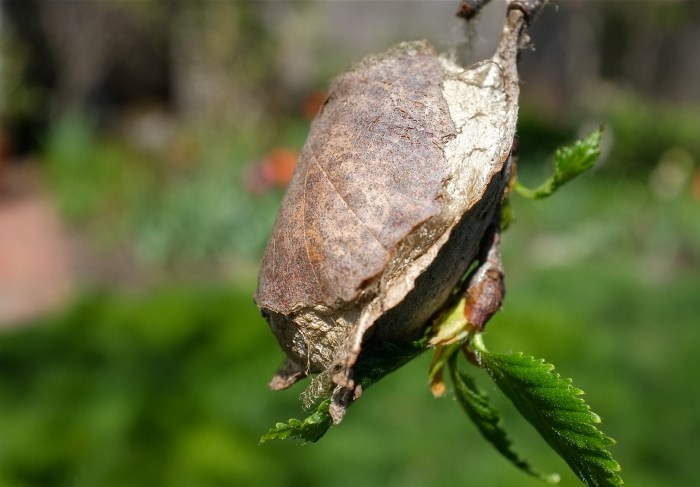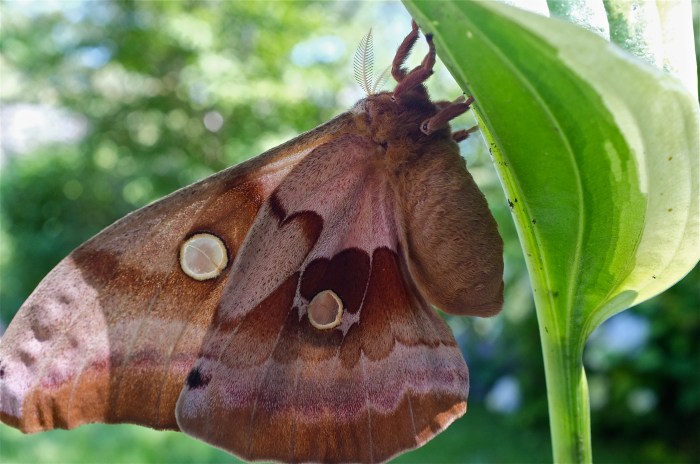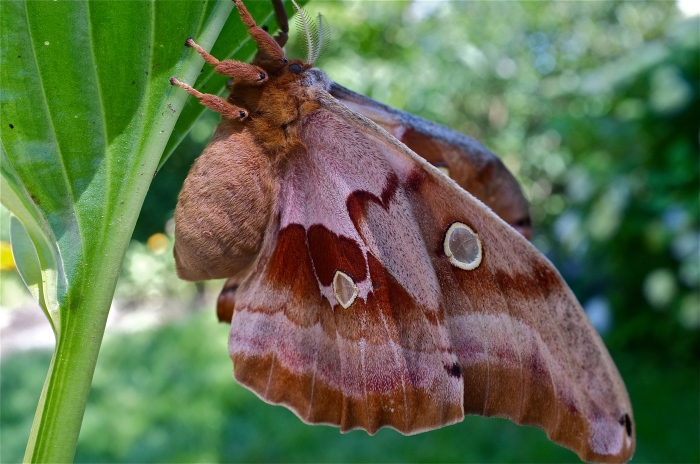 Joey forwarded an email from reader Benjamin, who asks the following,
Joey forwarded an email from reader Benjamin, who asks the following,
“I found a silky green worm last August. I put it on my house plant and the next day it had turned into a caccoon. It has been in my house for almost 8 months. It came out on my birthday March 22. So how do I attract a male for my moth? It is the biggest one I have seen.”
Hi Benjamin,
Thanks so much for writing. You have a gorgeous Polyphemus Moth (Antheraea polyphemus), and it does look like a female in the photo provided as they have thinner antennae than the male.
On the evening of the day the female emerges, she releases a pheromone, which attracts the male. Mating occurs that evening to early morning. After mating, she immediately begins to deposit eggs on the leaves of her caterpillar’s host plant.
Polyphemus Moths are members of the Saturn Family of moths and they emerge only to mate and deposit eggs of the next generation. They do not drink nectar because they do not have mouthparts.
You don’t say in what state you are located so I will provide you with two responses.
If you live in our region, it is far too early for the moth to have emerged and therefore, far too cold to place outdoors to attract a male. She will die if placed outdoors at this time of year.
If you live in a warm climate where there may be male Polyphemus moths on the wing, I have had success with placing a female in an enclosed screened porch entryway. When I wake up in the morning, I often find a male waiting outside the porch door. He’s usually easy to capture. Then I place him in the enclosed area with the female. Hopefully–no guarantees–mating will occur.
If in the future you are so lucky as to find a Saturn moth cocoon, or a caterpillar that pupates and turns into a cocoon or chrysalis, I highly recommend leaving it outdoors in a sheltered spot where you can locate it the following spring. Indoor temperatures are usually much too warm and will trick the moth into emerging too soon. I keep all chrysalisides and cocoons in a terrarium on my front porch (not the enclosed area), where they can experience normal winter and spring temperatures and humidity, and will therefore emerge at the appropriate time of year.
Polyphemus moth caterpillars eat a wide variety trees including willow (Salix), maple (Acer), birch (Betula), and oak (Quercus). Saturn Moths are in sharp decline, largely because of all the terrible herbicides and pesticides people spray on trees, which kill not only bad bugs, but all species of adult Lepidoptera, and their cocoons and chrysalides as well.





